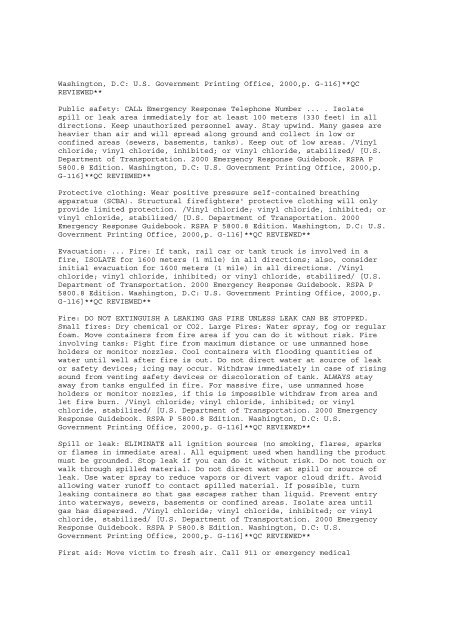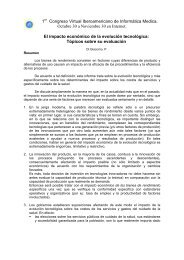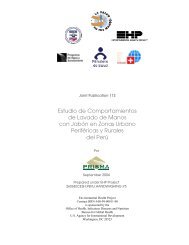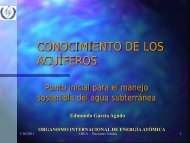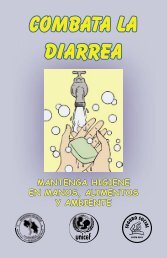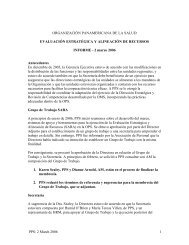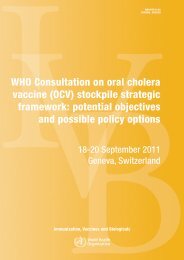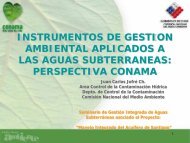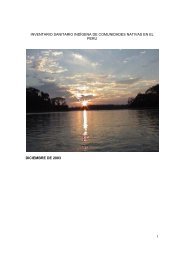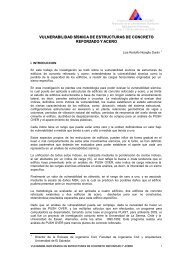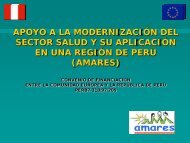a database of the National Library of M
a database of the National Library of M
a database of the National Library of M
You also want an ePaper? Increase the reach of your titles
YUMPU automatically turns print PDFs into web optimized ePapers that Google loves.
Washington, D.C: U.S. Government Printing Office, 2000,p. G-116]**QCREVIEWED**Public safety: CALL Emergency Response Telephone Number ... . Isolatespill or leak area immediately for at least 100 meters (330 feet) in alldirections. Keep unauthorized personnel away. Stay upwind. Many gases areheavier than air and will spread along ground and collect in low orconfined areas (sewers, basements, tanks). Keep out <strong>of</strong> low areas. /Vinylchloride; vinyl chloride, inhibited; or vinyl chloride, stabilized/ [U.S.Department <strong>of</strong> Transportation. 2000 Emergency Response Guidebook. RSPA P5800.8 Edition. Washington, D.C: U.S. Government Printing Office, 2000,p.G-116]**QC REVIEWED**Protective clothing: Wear positive pressure self-contained breathingapparatus (SCBA). Structural firefighters' protective clothing will onlyprovide limited protection. /Vinyl chloride; vinyl chloride, inhibited; orvinyl chloride, stabilized/ [U.S. Department <strong>of</strong> Transportation. 2000Emergency Response Guidebook. RSPA P 5800.8 Edition. Washington, D.C: U.S.Government Printing Office, 2000,p. G-116]**QC REVIEWED**Evacuation: ... Fire: If tank, rail car or tank truck is involved in afire, ISOLATE for 1600 meters (1 mile) in all directions; also, considerinitial evacuation for 1600 meters (1 mile) in all directions. /Vinylchloride; vinyl chloride, inhibited; or vinyl chloride, stabilized/ [U.S.Department <strong>of</strong> Transportation. 2000 Emergency Response Guidebook. RSPA P5800.8 Edition. Washington, D.C: U.S. Government Printing Office, 2000,p.G-116]**QC REVIEWED**Fire: DO NOT EXTINGUISH A LEAKING GAS FIRE UNLESS LEAK CAN BE STOPPED.Small fires: Dry chemical or CO2. Large Fires: Water spray, fog or regularfoam. Move containers from fire area if you can do it without risk. Fireinvolving tanks: Fight fire from maximum distance or use unmanned hoseholders or monitor nozzles. Cool containers with flooding quantities <strong>of</strong>water until well after fire is out. Do not direct water at source <strong>of</strong> leakor safety devices; icing may occur. Withdraw immediately in case <strong>of</strong> risingsound from venting safety devices or discoloration <strong>of</strong> tank. ALWAYS stayaway from tanks engulfed in fire. For massive fire, use unmanned hoseholders or monitor nozzles, if this is impossible withdraw from area andlet fire burn. /Vinyl chloride; vinyl chloride, inhibited; or vinylchloride, stabilized/ [U.S. Department <strong>of</strong> Transportation. 2000 EmergencyResponse Guidebook. RSPA P 5800.8 Edition. Washington, D.C: U.S.Government Printing Office, 2000,p. G-116]**QC REVIEWED**Spill or leak: ELIMINATE all ignition sources (no smoking, flares, sparksor flames in immediate area). All equipment used when handling <strong>the</strong> productmust be grounded. Stop leak if you can do it without risk. Do not touch orwalk through spilled material. Do not direct water at spill or source <strong>of</strong>leak. Use water spray to reduce vapors or divert vapor cloud drift. Avoidallowing water run<strong>of</strong>f to contact spilled material. If possible, turnleaking containers so that gas escapes ra<strong>the</strong>r than liquid. Prevent entryinto waterways, sewers, basements or confined areas. Isolate area untilgas has dispersed. /Vinyl chloride; vinyl chloride, inhibited; or vinylchloride, stabilized/ [U.S. Department <strong>of</strong> Transportation. 2000 EmergencyResponse Guidebook. RSPA P 5800.8 Edition. Washington, D.C: U.S.Government Printing Office, 2000,p. G-116]**QC REVIEWED**First aid: Move victim to fresh air. Call 911 or emergency medical


